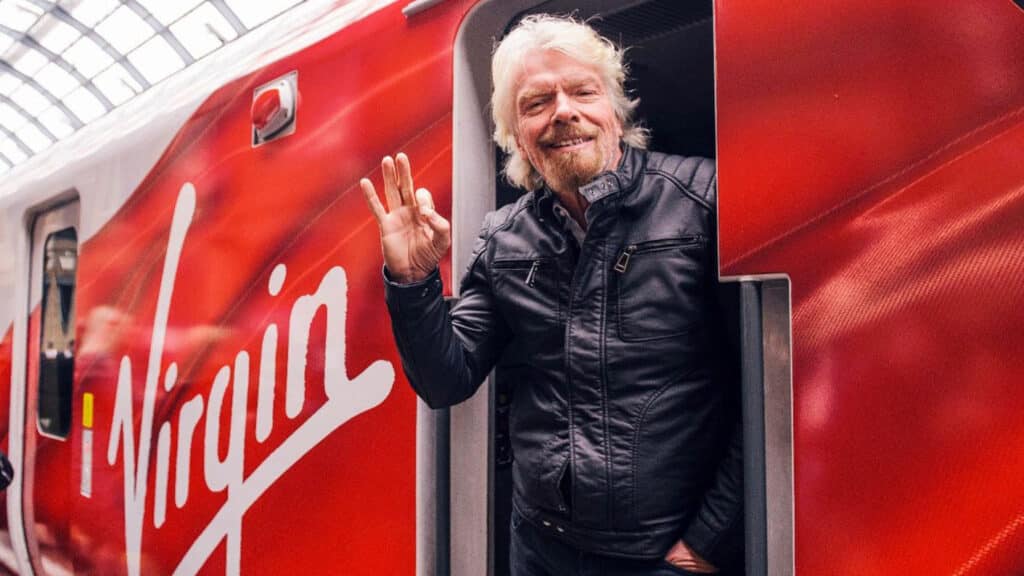The concept of StoryCasting™ intriguingly merges two disparate ideas—storytelling and lure-casting—to provide insight into the strategic use of narratives to attract and captivate an audience.
Storytelling is as ancient as human civilization; it’s a way to communicate ideas, beliefs, values, and experiences in a memorable format. On the other hand, lure-casting, a term borrowed from fishing, refers to throwing a lure into the water to attract and catch fish.
Let’s dive deeper into this concept and its components:
- Crafting the Narrative (The Lure)
- Originality: The story should be unique or offer a fresh perspective.
- Relatability: The audience should be able to connect with the story.
- Emotion: Stories that evoke emotion—happiness, sorrow, anger, or awe—are more likely to resonate with an audience.
- Structure: Just as every good story has a beginning, middle, and end, the narrative should be structured to have a clear progression.
- Casting the Story
- Medium: Choose the right platform or medium to share your story. Whether it’s a blog, video, podcast, or a live presentation, the medium can make a difference.
- Reach: Utilize tools and strategies to maximize the reach of your story. This could be through SEO, social media, or other promotional avenues.
- Feedback Loop: Allow for interaction and feedback from your audience. This could lead to valuable insights and even make your story more dynamic.
- Maintaining Interest
- Evolution: Let the story evolve based on audience feedback and changing contexts.
- Relevance: Regularly update the story to ensure it remains relevant to the current times or audience’s needs.
- Engagement: Create ways for your audience to be part of the story, whether through comments, contributions, or collaborations.
- Evaluation
- Metrics: Determine how you’ll measure the success of your story. This could be based on views, shares, engagement levels, or other relevant metrics.
- Adaptation: Based on evaluations, be ready to adapt your story or how it’s presented to achieve your objectives better.
- Ethical Considerations
- Authenticity: Ensure that your story is genuine and not misleading.
- Sensitivity: Respect cultural, social, and individual differences when sharing and adapting your story.
In essence, StoryCasting™ is about more than just telling a story. It’s about strategically crafting and sharing a narrative to attract, engage, and retain a specific audience. By understanding and implementing its various components, entities can more effectively communicate their message and foster deeper connections with their audience.
Let’s have a look at how brands meet the concept:
IKEA

Here’s how IKEA utilizes elements of StoryCasting to attract and engage its audience:
Crafting the Narrative:
- Lifestyle Vision: IKEA doesn’t just sell furniture. It sells a Scandinavian-inspired lifestyle. Their catalogs, showrooms, and advertisements often depict aspirational living spaces, emphasizing simplicity, functionality, and design.
- Sustainability Stories: IKEA often shares narratives about its commitment to sustainability, whether sourcing sustainable wood (true story?) or using renewable energy.
- Democratic Design: IKEA communicates a story of affordability and accessibility, emphasizing that good design should be available to everyone.
Casting the Story:
- Catalog as a Medium: The IKEA catalog is iconic. While showcasing products, it tells stories of different living spaces, catering to diverse audiences globally. With digital transformations, they’ve also been exploring augmented reality to enhance this storytelling.
- Showrooms: IKEA stores are set up with room displays, effectively ‘casting’ a story about potential home setups that customers can step into and experience.
- Digital and Social Media: IKEA frequently uses online platforms to share stories about new collections, sustainability initiatives, or DIY assembly hacks.
Maintaining Interest:
- Seasonal and Thematic Collections: IKEA often introduces new collections that tell a story. For example, a limited-time collection might focus on urban living or sustainability.
- Interactive Initiatives: IKEA has tried interactive campaigns like allowing customers to co-create or vote on new designs, making them part of the story.
Evaluation:
- Customer Feedback: IKEA significantly emphasizes customer feedback to adapt its offerings. Feedback points in stores, online surveys, and reviews help them adjust their narratives.
Ethical Considerations:
- Transparency: IKEA has made efforts to be transparent about its supply chain, manufacturing processes, and sustainability initiatives. This authentic storytelling enhances trust.
In conclusion, IKEA’s strategies encompass the essence of the concept. They craft and cast compelling narratives around home, design, sustainability, and inclusivity to lure and engage their global audience.
Virgin

Here’s how Virgin has utilized elements of StoryCasting over the years:
Crafting the Narrative:
- Brand Personality: Richard Branson himself embodies the Virgin brand. His adventurous spirit, willingness to take risks, and commitment to innovation are stories in themselves. These narratives are consistently woven into Virgin’s brand communications.
- Disrupting Industries: Whether it was the music industry, aviation, or telecommunications, Virgin has often positioned itself as the underdog, challenging established norms and competitors.
Casting the Story:
- PR Stunts & Events: Branson is known for his adventurous and sometimes audacious PR stunts, from hot air balloon journeys to dressing as a female flight attendant. These stunts often generate media attention and cast Virgin’s story far and wide.
- Engaging Content: Virgin’s online platforms, including their blog and social media channels, frequently share stories that reflect the brand’s values, innovations, and achievements.
- Customer Experiences: Virgin brands, especially Virgin Atlantic, focus on offering unique customer experiences. Every interaction, from onboard service to lounges, tells a premium and thoughtful service story.
Maintaining Interest:
- New Ventures: Virgin continually explores new industries and challenges, ensuring the brand story remains fresh and engaging. Virgin Galactic’s foray into space tourism is a prime example.
- Community Engagement: Virgin often engages its community with interactive campaigns, feedback sessions, and loyalty programs, ensuring they remain a part of the evolving brand story.
Evaluation:
- Customer Feedback: Virgin actively seeks feedback, using it to improve services and align its brand stories more closely with customer expectations and values.
- Brand Consistency: Virgin ensures a consistent brand message across its various ventures, reinforcing its core narratives.
Ethical Considerations:
- Social Responsibility: Virgin has been vocal about its commitment to social responsibility, sustainability, and positive impact. These narratives are essential for building trust and adding depth to their brand story.
Virgin’s approach to branding and communication aligns well with the concept of StoryCasting. By crafting compelling narratives and strategically “casting” them to its audience, Virgin has built a strong, globally recognized brand that resonates with many.
Warby Parker

Warby Parker, the eyewear company founded in 2010, made waves in its industry by leveraging a direct-to-consumer model, offering stylish eyewear at a fraction of the price of many competitors. They’ve smartly utilized elements of StoryCasting to connect with their audience:
Crafting the Narrative:
- Disruption & Affordability: From the start, Warby Parker’s story centered on disrupting the traditional eyewear industry with stylish, affordable options.
- Social Good: Their “Buy a Pair, Give a Pair” program tells a story of corporate responsibility and social impact. Every purchase leads to a donation, emphasizing the company’s commitment to global eye health.
Casting the Story:
- Digital Native Branding: Being pioneers of the online eyewear industry, they capitalized on online platforms to spread their narrative. Their website isn’t just a sales platform; it’s a story platform.
- Content Creation: Through creative campaigns, stylish photo shoots, and engaging video content, Warby Parker consistently showcases its brand ethos and product lineup.
- Pop-up Shops & Retail Stores: Recognizing the tactile nature of eyewear shopping, they opened physical stores, which are designed not just as sales points but as spaces that further the brand story with their unique design, layout, and customer experience.
Maintaining Interest:
- Collaborations: Warby Parker has collaborated with celebrities, designers, and other brands, keeping their offerings fresh and narrative engaging.
- Virtual Try-On: To enhance the online shopping experience, they introduced innovative features like virtual try-ons, telling a story of a brand that blends style with cutting-edge technology.
Evaluation:
- Feedback Mechanisms: Warby Parker emphasizes customer feedback, ensuring they evolve based on the audience’s desires.
- Adapting to Change: In response to market feedback, they expanded from purely online to brick-and-mortar stores, showcasing their adaptability and commitment to meeting customer needs.
Ethical Considerations:
- Transparency: The brand emphasizes its transparent supply chain and pricing, ensuring customers know the value they’re getting.
- Commitment to Social Impact: Beyond their “Buy a Pair, Give a Pair” initiative, Warby Parker has engaged in various community and global outreach programs, ensuring their story is one of positive impact.
Warby Parker’s journey has been characterized by a masterful mix of innovative storytelling and strategic “casting” of these narratives. Their brand is not just about selling eyewear but about reshaping an industry, offering value, and positively impacting it. This StoryCasting approach has been instrumental in building their audience’s trust, loyalty, and enthusiasm.
Nike
Nike, one of the world’s most recognizable brands, has consistently employed elements that align with StoryCasting to engage and lure its global audience. Here’s a breakdown of how they’ve done it:
Crafting the Narrative:
- Empowerment & Achievement: Nike’s tagline, “Just Do It,” encapsulates a narrative of empowerment, motivation, and achievement. This narrative encourages individuals to surpass their limits and obstacles.
- Association with Athletes: By partnering with top athletes from various sports, Nike weaves narratives of perseverance, excellence, and top-tier performance.
- Cultural Movements: Nike often associates with broader cultural and social movements. One notable example is their campaign with Colin Kaepernick, emphasizing the narrative of believing in something, even if it means sacrificing everything.
Casting the Story:
- Advertising Campaigns: Nike’s advertisements are not merely product showcases but compelling stories. Whether it’s the journey of a young athlete or a global sports event, these ads resonate with emotion and inspiration.
- Digital Platforms: Nike engages its audience with stories on its website, apps (like the Nike Training Club), and social media channels. These platforms share narratives of training, perseverance, and athletic excellence.
- Events & Sponsorships: Nike extends its narrative to real-world experiences by sponsoring major sports events and hosting events like the Nike Women’s marathons.
Maintaining Interest:
- Product Innovations: Nike tells stories through its innovative products, from self-lacing shoes to sustainable sneakers. Each innovation comes with a narrative of progression and forward-thinking.
- Collaborations: Collaborating with designers, artists, and influencers allows Nike to tap into varied narratives and reach different audience segments. These collaborations keep the brand fresh and relevant.
Evaluation:
- Consumer Feedback: Nike constantly gathers feedback through its stores, digital platforms, and market research. This feedback helps refine and adapt their narratives.
- Engagement Metrics: On digital platforms, Nike gauges the success of their storycasting by monitoring engagement metrics, allowing them to understand which narratives resonate the most.
Ethical Considerations:
- Sustainability: Nike has begun weaving stories of sustainability and responsibility, emphasizing their shift towards more eco-friendly practices and products.
- Community Engagement: Through initiatives like the Nike Foundation, the company casts a narrative of giving back, supporting communities, and empowering youth.
In essence, Nike doesn’t just sell athletic wear; it sells a narrative of achievement, empowerment, and cultural relevance. Through strategic StoryCasting, Nike has connected emotionally with its audience, making it more than just a sportswear brand. It’s an emblem of aspiration and inspiration.
Apple
Apple is one of the paramount examples of a brand that has successfully used elements of StoryCasting to engage and create a loyal fan base. Here’s how Apple has incorporated storycasting throughout its history:
-
Crafting the Narrative:
- Innovation & Simplicity: Apple’s story has centered around breaking the status quo since its inception. Their famous “1984” commercial is emblematic of this approach, showcasing Apple as the disruptor to an otherwise uniform and monotonous tech world.
- Exclusivity & Luxury: Apple products aren’t just devices but experiences. The company’s narrative positions its products as luxurious yet accessible, underlined by impeccable design and an emphasis on user experience.
- Empowerment: Apple tells stories of how their products empower creativity, productivity, and personal expression, whether it’s through a Mac, iPhone, or iPad.
-
Casting the Story:
- Product Launch Events: Apple’s product launch events are stories. With a theatrical flair, Apple weaves a narrative about each product, emphasizing its innovation, functionality, and how it fits into the user’s life.
- Advertisements: Apple’s ads tell stories, from the “Think Different” campaign to the “Shot on iPhone” series. They evoke emotion, emphasize creativity, and place the user at the center of the narrative.
- Retail Stores: Apple Stores are more than just sales points. Their design, Genius Bar, and even product placement tell the story of a brand that emphasizes user experience and community.
-
Maintaining Interest:
- Consistent Evolution: Apple consistently tells stories of evolution, highlighting how each product iteration is better, more innovative, and more attuned to user needs.
- User Stories: Apple often showcases real stories from users who have achieved remarkable things using their products, from filmmakers to photographers to students.
- OS Updates: With each operating system update, Apple narrates a tale of enhancement, introducing users to new features and emphasizing improved experiences.
-
Evaluation:
- Feedback Loops: Apple has various channels, like its beta software programs, where dedicated users can provide feedback on new features, ensuring the narrative remains user-centric.
- Engagement with the Developer Community: Through events like WWDC (Worldwide Developers Conference), Apple engages with the developer community, emphasizing a narrative of collaboration and innovation.
-
Ethical Considerations:
- Privacy: In recent years, Apple has strongly emphasized a story of user privacy, positioning itself as a brand that prioritizes user data protection amidst growing global concerns.
- Sustainability: Apple shares stories of its efforts to reduce its carbon footprint, use recycled materials, and aim for a closed-loop supply chain, casting a narrative of environmental responsibility.
In summary, Apple doesn’t just sell products; it sells experiences, aspirations, and a particular worldview. Through carefully crafted narratives and strategic casting of these stories, Apple has built one of the most loyal customer bases in the world.
Victoria's Secret
Victoria’s Secret, a well-known lingerie brand, has used StoryCasting to engage with its target audience. Here’s how the brand has incorporated elements of storycasting:
Crafting the Narrative:
- Glamour & Luxury: Victoria’s Secret has traditionally portrayed its products as symbolic of luxury, aspiration, and glamour. This has been symbolized by the “Angels” – the brand’s top models.
- Sensuality & Confidence: Their products are often positioned as lingerie and empowerment tools, making the wearer feel confident and sensual.
Casting the Story:
- Fashion Shows: The annual Victoria’s Secret Fashion Show was one of the brand’s flagship events. These were more than just product showcases—spectacles featuring music performances, elaborate themes, and the Angels mentioned above. The shows aimed to tell stories of fantasy, luxury, and aspiration.
- Advertisements: Through glossy photo campaigns and videos, Victoria’s Secret emphasizes the transformative power of its products, often using dreamy, luxurious settings.
- Stores: The brand’s retail outlets, with their plush interiors and attentive service, further the narrative of luxury and exclusivity.
Maintaining Interest:
- New Collections & Themes: Victoria’s Secret frequently launches new collections, each with its sub-narrative. These collections keep the brand’s offerings fresh, whether focusing on comfort, a particular style, or a seasonal theme.
- Collaborations: Collaborating with famous designers or personalities, the brand introduces fresh takes on its products and reaches different audience segments.
Evaluation:
- Customer Feedback: In-store feedback, online reviews, and other channels help Victoria’s Secret adapt to changing preferences and maintain a narrative that resonates with its audience.
- Rebranding Efforts: Over recent years, Victoria’s Secret has faced criticism over issues like representation and body positivity. The brand has made efforts to recalibrate its narrative to be more inclusive, signaling its responsiveness to cultural and societal shifts.
Ethical Considerations:
- Diversity & Inclusion: As of my last update in September 2021, Victoria’s Secret has shown signs of pivoting towards a more inclusive brand image, moving away from its traditional “Angel” archetype to showcase a more diverse array of women. This shift represents a changing narrative that speaks to empowerment and representation for all women.
Victoria’s Secret has built its brand through compelling luxury, aspiration, and empowerment narratives. While they have faced challenges and criticisms, their engagement with StoryCasting principles allows them to remain a topic of discussion and maintain a connection with their audience.
Author
-
Edwin Korver is a polymath celebrated for his mastery of systems thinking and integral philosophy, particularly in intricate business transformations. His company, CROSS-SILO, embodies his unwavering belief in the interdependence of stakeholders and the pivotal role of value creation in fostering growth, complemented by the power of storytelling to convey that value. Edwin pioneered the RoundMap®, an all-encompassing business framework. He envisions a future where business harmonizes profit with compassion, common sense, and EQuitability, a vision he explores further in his forthcoming book, "Leading from the Whole."

